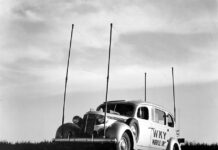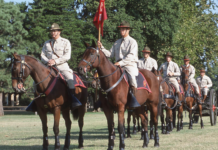
[dropcap]Our[/dropcap] country is less than 250 years old and our state is 110, so history before then, in context, is difficult to come by. But this land was inhabited long before it was the state of Oklahoma or part of the United States.
“Native Americans have been in eastern Oklahoma for over 12,000 years, and it is possible that there have been people in the state over 27,000 years,” says Dennis Peterson, manager of the Spiro Mounds Archaeological Center, the only place in the state where the public can get a glimpse of Oklahoma before Europeans arrived.
The Spiro Mounds, in the far eastern part of the state less than 10 miles from the Arkansas line, provide the opportunity to learn about a civilization that existed in what is now Oklahoma long before modern history began. More than 1,100 years ago, the area on a bend of the Arkansas River was prime for farming as well as trade and a place from which to lead nations of people.
“Around A.D. 850, the elite community and surrounding city where the Spiro Mounds site is now was a growing control point for trade and transport moving along the Arkansas River,” Peterson says.
The “elite community” were the leaders who worked and lived on the mounds. The mounds themselves served several purposes. Each was created by hauling and piling bucketfuls of dirt and mostly constructed as a place to erect a house or other ruling structure. The types of mounds at Spiro consist of one burial mound, two temple mounds and nine house mounds, but Peterson says they were all set up for one general purpose: leaders ruling from above.
“Think of [the mounds] like when you go into a courtroom and the judge sits above everyone else or in a church when the pastor stands on a dais,” he says. “It both physically and psychologically separates the leader and institution from everyone else.”

Many mysteries surround the Spiro people and the long-ago community. According to Peterson, even with all the archaeological work done over the years, only about 15 percent of the 150 acres that are preserved have been investigated. One major question that is yet to be answered is what caused the demise of this civilization. The mound center thrived from about 900 until the end of its use in around 1450. Little is known about why it was abandoned and why the supporting city surrounding the mounds continued to be inhabited for an additional century.
Visiting the Spiro Mounds Archaeological Center provides the opportunity to tour the mounds, as well as view interpretive exhibits of some of the thousands of artifacts excavated from the site’s burial mound. On May 6, the center will hold its annual Archaeology Day and Birthday Bash celebrating its opening in 1978. There will be several special tours and exhibits available to learn more about this long-ago settlement.
As we learn from what the Spiro people left behind, our lives are enriched by creating connections to our shared past.
























